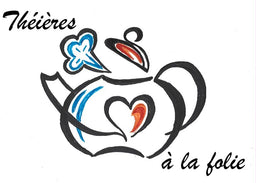Summary :
In the dictionary, style is considered on 4 levels:
- The manner of expressing one's thoughts.
- The set of characteristics of a work of art of an era (Corinthian style, Baroque... Renaissance style, Second Empire...)
- Linguistics: level of language, of a text (literary, reading, etc.)
- Way of behaving, lifestyle, generation.
When we talk about the style of a teapot, it can be considered the same in all these forms.
- The way of expressing one's thought: a teapot can evoke a feeling, a memory, an emotion which gives it the style that one lends to it through this filter. It can be romantic, retro, fun, too small, too big (always depending on what you feel when you see it, when you use it) the judgment is partly subjective since it is influenced by taste and feeling.
- The set of characteristics of a work of art of an era. Here we know that it will be rare, even zero the opportunity to have a period work, but we can talk about style to refer to it: A vintage teapot means "old-fashioned" or classic style generally from the 1930s -1970. A retro will rather refer to one that belongs to the past, to the 1st half of the 20th century. Art Deco will refer to the years 1910-1920 (symmetry, superimposed shapes, complex lines, aerodynamic curves, gold, silver, refinement). The style will evoke the baroque when the concept is to surprise, to move: eccentric, bizarre, free and unexpected ornaments. Contrast and play with light. Rococo is an overloaded, frivolous style, with forms and themes that tickle the senses, its origin is Baroque. And then the kitsch style is characterized by the desire to deviate from outdated elements, see bad taste. The traditional style is what has passed into the use of a culture, where there is tradition, there is a cultural reference (Chinese, Japanese, European, Western, American…) But there again, the reference is subjective, it is based above all on the idea and representation that we have of such and such a cultural tradition, unless we are even directly concerned.
- Linguistics: The description will be either playful, or laborious, or evasive, or technical...
- Lifestyle: this is perhaps the most interesting, do we like to be with family? With friends ? Or be alone? Do we like to have everything we need everywhere, or just at home after work? Do we like fragrant tea, or any? Is it a ceremony for us, or is it just an automatic moment between two actions? Are we looking for the practical side, or do we like beautiful things, the refined? Or the authentic, the rustic? So many questions that you can ask yourself when choosing a teapot. Or at least when we decided to choose a teapot instead of taking it to a supermarket and telling ourselves that it will do the trick anyway.
The style is subjective, everyone puts their connotation, their value judgment. Style is not a reliable and definitive, scientific state, it is just one more piece of data to allow us to position ourselves in our representations. To have style is not to be banal, it is to challenge, to provoke questioning.


